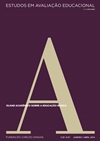Rankings na educação superior: as melhores faculdades do Brasil (1982-2000)
DOI:
https://doi.org/10.18222/eae255720142830Keywords:
EDUCAÇÃO SUPERIOR • RANKINGS ACADÊMICOS •RANKING PLAYBOY • AVALIAÇÃO EDUCACIONALAbstract
Este artigo aborda o estudo do extinto ranking Melhores Faculdades, o primeiro no campo da educação superior brasileira, criado em 1981 e editado anualmente, por dezenove anos, pela revista masculina Playboy. Foca o funcionamento e a metodologia desse ranking a partir de uma revisão bibliográfica e documental, envolvendo artigos científicos, notícias de jornal, depoimentos de autoridades universitárias publicados em portais da internet e, sobretudo, a análise de suas edições. Partindo da contextualização teórica sobre os rankings acadêmicos, o artigo revela a metodologia adotada pelo ranking em questão, baseada principalmente nas opiniões de chefes de recursos humanos de grandes empresas e diretores dos cursos avaliados, demonstrando a predominância de um grupo de instituições da região Sudeste como responsáveis pelos cursos de melhor qualidade e acenando para, apesar das críticas, a aceitação dos rankings como referenciais de qualidade pelos gestores universitários.
Downloads
Downloads
Published
How to Cite
Issue
Section
License
Authors who publish in this journal agree to the following terms:
a. Authors retain the copyright and grant the journal the right to first publication, with the paper simultaneously licensed under the Creative Commons Attribution license that allows the sharing of the paper with acknowledgment of authorship and initial publication in this journal.
b. Authors are authorized to assume additional contracts separately, for non-exclusive distribution of the version of the paper published in this journal (for example publishing in institutional repository or as a book chapter), with acknowledgment of authorship and initial publication in this journal.
c. Authors are allowed and encouraged to publish and distribute their paper on-line (for example in institutional repositories or on their personal page) at any moment before or during the editorial process, as this can generate productive changes, as well as increase the impact and citation of the published paper (See The Effect of Open Access).





